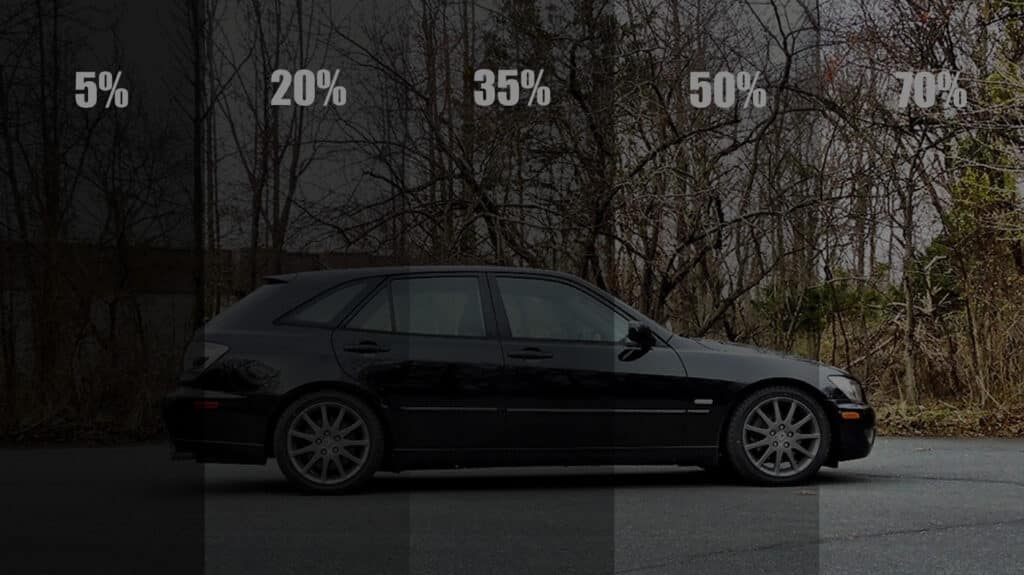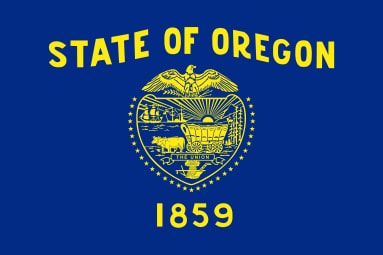Window tinting laws are taken quite seriously in the state of Oregon. The reason for this is that dark windows make it difficult for law enforcement officials to get a clear view of what and who’s inside each vehicle at traffic stops.
This is an important issue because of the risk of concealed weapons, among other things, that pose a threat to the state.
Tint laws were first implemented in Oregon in 2003 and have been in effect ever since. This post discusses everything you need to know about the tint laws in this state.
Is Window Tint Legal in Oregon

Window tinting is legal, but there’s a limit to how dark or reflective your tint can be. The same applies to all other states.
The rules are fairly simple to understand and follow. But if you aren’t aware of them and tint your windows without taking the rules into consideration, you might have a bit of trouble with law enforcement.
There’s a good chance that you’ll be pulled over because. Cops are allowed to stop your vehicle and verify it. Let’s take a closer look at the laws and understand them in more detail.
Permitted Window Tint Darkness

Window tinting is measured using a unit called VLT or visible light transmission. As you can probably glean from the context, this is a measurement of how much light is allowed to enter the car through your tinted film.
This is measured in percentage, and the laws are also specified in the same units. Here’s what the laws in Oregon are.
Sedans
- Windshield: Non-reflective tint permitted for 6 inches on top of the windshield
- Driver-side windows: At least 35% VLT
- Passenger-side windows: At least 35% VLT
- Rear window: At least 35% VLT
SUVs and Vans

- Windshield: Non-reflective tint permitted for 6″ on top of the windshield
- Driver-side windows: Greater than 35% VLT
- Passenger-side windows: No limits
- Rear window: No limits
Acceptable Tint Reflection in Oregon
Apart from tint darkness, there is something else you should familiarize yourself with and that’s tint reflection. This refers to the amount of light that bounces off your window tint film.
These films have metallic properties which create a mirror-like effect and reduce the heat and glare. Just like transparency, there’s a limit to how reflective your tint film can be.
Sedans

- Windshield: N/A
- Driver-side windows: Less than 13% reflective
- Passenger-side windows: Less than 13% reflective
- Rear window: N/A
SUVs and Vans
- Windshield: N/A
- Driver-side windows: Less than 13% reflective
- Passenger-side windows: Less than 13% reflective
- Rear window: N/A
Other Tint Rules in Oregon
Oregon, like many other states, also has a few caveats when it comes to window tinting and reflection rules.
- If the rear window right behind the driver’s seat is tinted, your car should have side mirrors on both sides.
- According to state law, the tint should not be yellow, gold, red, amber or black in color.
- Window tint manufacturers are required to provide a certificate with that specifies the exact VLT% of their products. When you’re getting the film installed, you can ask your dealer for a certificate.
- Oregon allows for medical exemptions under this law but that only applies if the vehicle is registered under your name, your legal guardian’s name, or a family member’s name.
- You also need an affidavit from a licensed doctor proving the medical condition exists. A note on their letterhead is also acceptable.
- Violating these rules is a Class B violation in Oregon, and you will be fined $360.
State of Oregon Info

Oregon is a state along the Pacific coast and is surrounded by Idaho in the east, California in the south, and Washington in the north.
It ranks 27th in the US in terms of population and Portland is on top of that list within the state.
Population: 3,899,353
Capital: Salem
Registered vehicles: 4,095,442
Total lane miles: 162,101
Number of highways: 4
Tint law references: Oregon Public Law | FAQs

